Question and Answer – Diarrhoea
[ad#Commission Junction – Pet Care Choice]
Dear Your Own Vet,
Hope you don’t mind if I ask you for your veterinary expertise. I have a 14 year old female Staffordshire Bull terrier, who is still quite healthy, runs about and barks occasionally and still has a fairly healthy appetite. However, in the last few days her tummy has been running. Is this cause to put her down or should I hang on a bit? I don’t want to let her suffer, though as I said, she is still quite lively and eating. I am afraid to take her to my vet in case he tells me the inevitable.
Thanks a lot!
Lianne Gill
Robertsham
South Africa
Dear Lianne,
Diarrhea in dogs is a very complicated thing to diagnose because, for one, the intestines are inside the body, and we only see what comes out the end of them, and two, because almost any illness can cause diarrhea. Diarrhea that continues for a few days doesn’t necessarily mean “the end.” It can mean anything from a gastro bug, to a food allergy, to end stage liver cancer. All of those cause diarrhea. and differentiating between them is the important part.
There are three basic things your vet needs from you to work out what could be causing your dogs’ diarrhea.
1 – HISTORY
Answer these eight simple questions to provide your vet with an accurate history
1. How long has your dog been having diarrhea? (a few days mean very different things to a few months)
2. Did your dog eat anything different from his normal food in the few days before the diarrhea started? (rule out food allergies/intolerance)
3. Was he off his food at all and is he still off his food? (may indicate more serious problems that cause nausea such as kidney or liver problems)
4. Did she vomit at all and when? (one vomit is usually nothing to be concerned about unless it is accompanied by anorexia or very poor appetite or the animal vomits persistently)
5. Has the appearance of the diarrhea changed from when it began to now? (Texture, mucus, blood and color)
6. Is your dog vaccinated up to date? (In puppies viruses like Canine Parvo Virus (cat flu), Corona Virus and Infectious Canine Hepatitis all cause nasty contagious diarrhea)
7. Is your dog wormed regularly? (Bad hookworm infections can cause diarrhea and weight loss)
8. Have there been any other animals or people sick that your dog has been in contact with? (contagious gastroenteritis eg. Giardia)
2 – YOUR DOG
Your vet will look at these seven simple things on your pet to check if there is anything he/she can pick up that could indicate the source of the diarrhea
1. The color of your dog’s gums
Pale gums can indicate internal bleeding, shock or heart failure, which are all serious illnesses that would necessitate admitting your pet and putting her on a drip as well as doing further tests.
Jaundiced gums can indicate liver problems or problems with blood breakdown in some serious immune conditions.
Dark brick red gums can indicate shock due to blood concentration in bloody fast acting diarrhea.
A yucky brown slime on the gums accompanied by halitosis can indicate kidney failure.
Large oral growths can indicate cancer that may have spread internally or be bleeding into the stomach.
2. Skin Turgor
What this means is your vet will lift the skin on your dog’s neck and check to see if it “tents”, which would indicate dehydration and the need to put your pet on a drip. Skin that “tents” is skin that stays stuck together for a few seconds before dropping back down. Normal skin pops back to it’s original place almost immediately.
3. Your dog’s heartbeat, pulse and lung sounds
A dog that has a weak, rapid thready pulse may be in shock from dehydration and may need life giving fluids.
An obvious heart murmur along with free fluid in the belly or fluid on the lungs can indicate heart failure that needs to be treated with diuretics to get the excess fluid out the body.
4. Feeling your dog’s abdomen
Your vet will check for the following:
Pain – especially right near the front of the abdomen can indicate inflammation of the pancreas or a stomach ulcer. Pain further back can indicate a blockage and gas built up behind it.
Lumps and bumps – Any lump or bumpiness that is felt needs to be checked. Lumps in the liver or spleen can be cancerous and lumps in the intestines can be swollen glands, cancer or a blockage like a stone your dog may have swallowed.
Feel of the intestines – can any solid stools be felt or is it all liquid? Is there a lot of gas built up?
5. Temperature
Your vet will check to see if your dog’s temperature is normal:
A high temperature can indicate an infection or a rupture of an intestine
A low temperature can indicate shock.
6. General appearance and condition
A dog that is lively, has a normal weight and coat and bounces into the room is a good sign.
An emaciated or very thin dog can indicate a diarrhea due to not digesting the food properly (seen in German Shepherds with Pancreatic Insufficiency). It can also indicate a cancerous growth that is using up all the animal’s energy.
A very fat dog may have a huge appetite and eat anything in site including rubbish, sticks, stones and washing off the line.
Dogs that are covered in growths on the outside may have one that has spread – mast cell tumors affect the stomach lining leading to vomiting and diarrhea.
Enlarged glands may indicate generalized infection or cancer of the lymph glands
7. Breed
Certain breeds like Bull Terriers tend to eat strange objects which could lead to diarrhea.
Yorkshire Terriers have sensitive stomachs and are very prone to recurrent bouts of diarrhea
German Shepherds suffer from Exocrine Pancreatic Insufficiency (they don’t make enzymes to digest their food so it passes straight through) and imbalances of bacteria and antibodies in their intestines.
8. Age
Puppies tend to pick up contagious viruses, especially if they are not vaccinated, such as Corona Virus, Parvo Virus and Infectious Canine Hepatitis.
Younger dogs tend to swallow silly things like sticks and stones that they chew when teething.
Old animals are more likely to be candidates for cancer, and liver or kidney failure
3 – THE STOOL ITSELF
Stools are checked for the following four things:
1. Color
Black – this is digested blood indicating bleeding or inflammation high up i.e. the mouth, esophagus, stomach or duodenum (start of the intestines)
Yellow – this is bile, it may indicate a liver problem or merely nasty infected/inflammed bowels
White to very pale or gray – this may indicate poor digestion
Red – Fresh blood, usually from an inflammed colon, ileum or jejunum (lower small intestines). May indicate inflammation/infection/a bleed form a polyp or growth. Warning!!!! Small dogs that suddenly develop pools of bloody diarrhea may have a disease called “Haemorrhagic gastroenteritis” which is an emergency as they can die quickly from shock with all the fluid loss.
2. Mucus
Mucus or jelly in the stool indicates inflammation due to a colitis or worms most often.
3. Texture and Consistency
Large pools of diarrhea with blood may be an emergency, whereas sticky, soft stools most often cause irritation round the anus in long haired breeds where they form a glue onto the skin and anus, causing a horrible rash and stopping the dog from going to the toilet.
4. Stool Tests
These can be performed at your vet’s surgery or sent away to a lab for analysis. The stool needs to be checked for worms, by doing a float, and tested for parasites like Giardia and Coccidia, both of which can cause long term nasty diarrhea. The bacteria in the stool are also checked to see if there is a nice, normal mixed population or a single bug indicating an infection. The stool is also checked for digestive enzymes, undigested food and the presence of blood or excessive fat.
TREATMENT OF DIARRHEA
Once these things have been checked, your vet will make recommendations to you about what to do next.
Treatment of a simple diarrhea will usually include changing to diet to a bland diet such a Hills I/D, Eukanuba Intestinal or boiled chicken with rice. Probiotics will help balance out any bacterial abnormalities and are usually given together with a course of antibiotics, if your vet thinks the cause may be contagious. Stool binders, such as Kaolin and Pectin may help to solidify a very runny stool.
Otherwise, the diarrhea is treated by treating the cause of the problem.


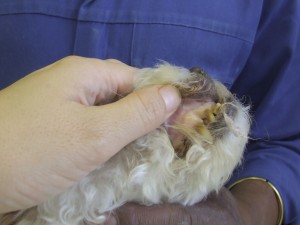
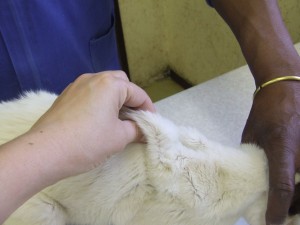
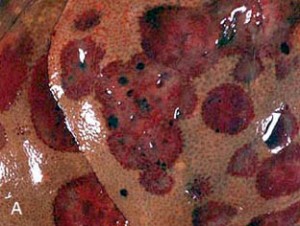
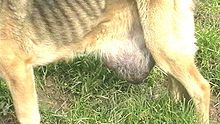
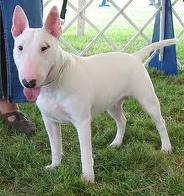
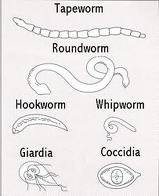
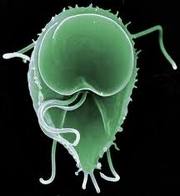
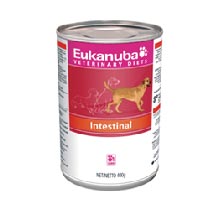
Leave a Reply
You must be logged in to post a comment.